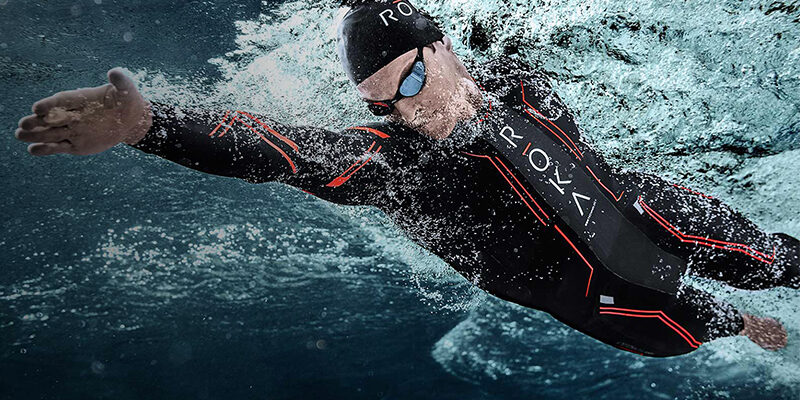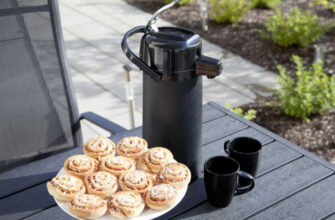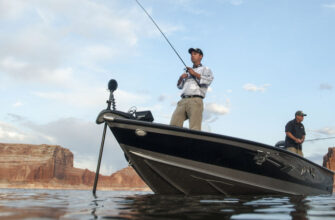Designed to improve heat exchange and protect the body from hypothermia, the wetsuit has become widespread among fans of outdoor activities, swimming, as well as among divers and spearfishers. All that remains for the buyer is to determine the specific parameters and choose the appropriate model.
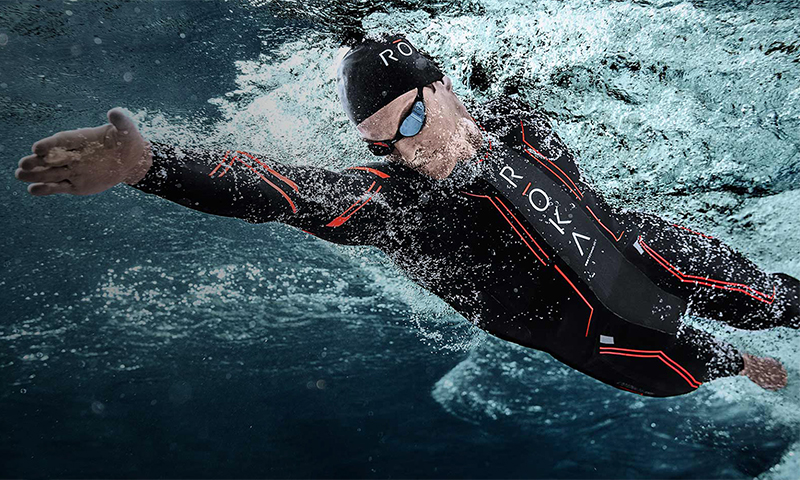
- Top wetsuit manufacturers
- Types of wetsuits
- Wet wetsuits
- disadvantages
- Dry wetsuits
- disadvantages
- Semi-dry wetsuits
- disadvantages
- The main criteria for choosing a wetsuit
- Choosing the size of the wetsuit
- The material from which the wetsuit is made
- Materials used in duplication
- How thick to choose a wetsuit
- Wetsuit type and fit
Top wetsuit manufacturers
Modern models of wetsuits are technically complex solutions, the quality and functionality of which directly depends on the quality of manufacture. Experienced divers and spear hunters, as well as employees of all kinds of special services, speaking of such models, distinguish the following manufacturers:
-
Marlin Skiff;
-
Omer;
-
Sopran;
-
AquaLung;
-
ScubaPro;
In addition to the characteristics and operating properties of a particular model, it is necessary to study numerous reviews of divers and spear hunters who have managed to get acquainted with one or another model. You can do this by chatting with them live, watching reviews on Youtube and reading reviews on forums and social networks.
Types of wetsuits
Modern models of wetsuits differ quite strongly, each of them has both strengths and weaknesses.
Wet wetsuits
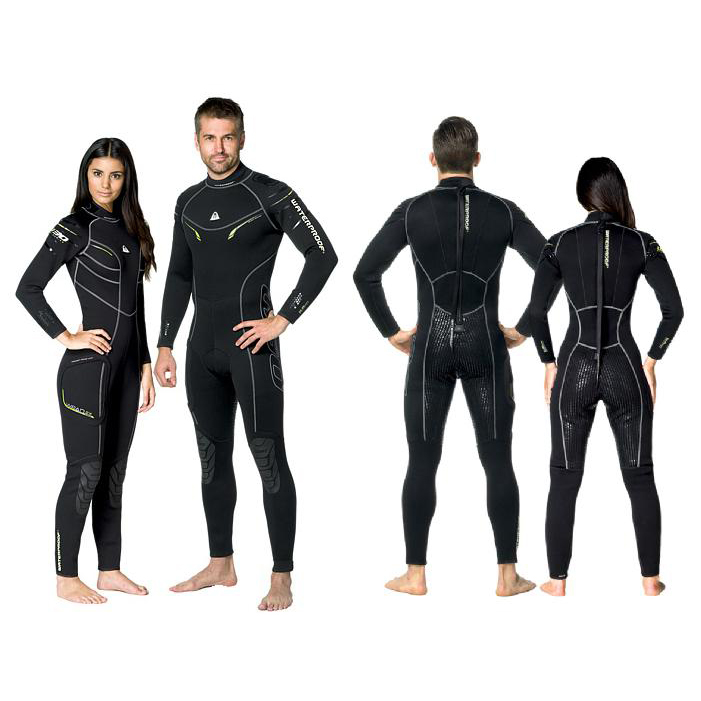
Very interesting models, which, moreover, are also inexpensive. During operation, a small amount of water penetrates into the suit, for which there is no way back. It is it that the human body heats up, subsequently turning it into a special warm layer that evens out the temperature and provides comfort. Initially, wet suits were used exclusively in the warm season, but nowadays, thick-walled wetsuits suitable for autumn and winter use have become widespread. Primary moistening of these models is carried out using warm water with the addition of shampoo, which is poured inside before the diver puts it on.
Advantages
-
Inexpensive;
-
A variety of models for any operating conditions;
-
Comfortable style that does not hinder movement;
-
High thermoregulatory properties;
disadvantages
- It is quite difficult to put on if you do not use shampoo or special gels;
Dry wetsuits
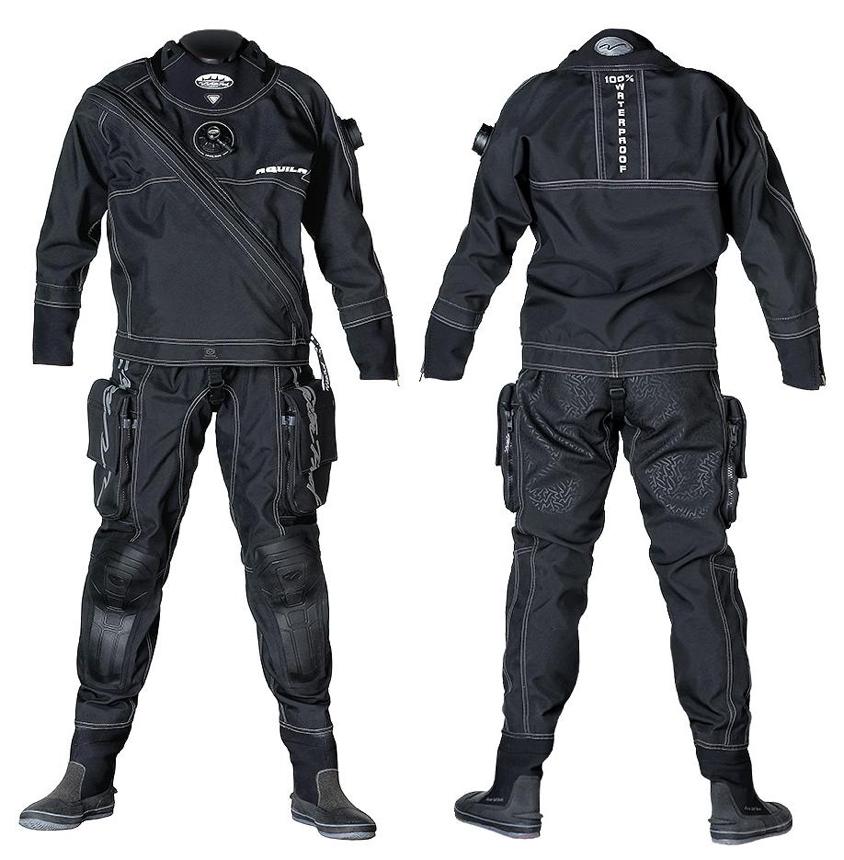
Models whose operating principle is completely opposite to those described above. They represent a waterproof, sealed spacesuit, combined with a pressure helmet and equipped with seals in the area of the wrists and feet. They have very different thicknesses, and due to the fact that they perfectly protect from the cold, they are suitable for use both in summer and winter.
Advantages
-
Maximum thermal insulation;
-
Various thicknesses for certain operating conditions;
-
Allow to put on warm clothes or thermal underwear;
-
Complete waterproofing;
disadvantages
-
Very expensive;
-
Not able to provide natural movements;
Semi-dry wetsuits
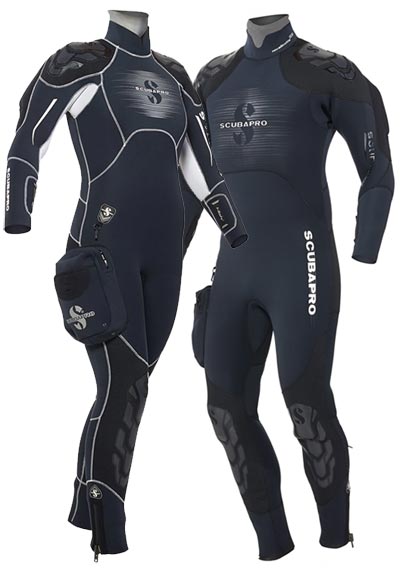
According to divers, this type is in many ways versatile due to its excellent thermal insulation, similar to that of dry models. Due to the design, water seepage is acceptable, but the amount is strikingly less than with traditional wet models. These wetsuits are typically 2 to 8 millimeters thick, and the more severe the operating conditions are expected, the thicker the wetsuit should be.
Advantages
-
Decent thermal insulation;
-
Decently endure contact with solid objects;
-
Lightweight and durable;
-
Availability of models for use in any conditions;
-
Comfortable cut that does not cause discomfort;
disadvantages
-
Expensive enough;
-
Not suitable for prolonged exposure to water;
The main criteria for choosing a wetsuit

Having decided on the specific type of wetsuit that is acceptable for use in specific conditions, you need to get to know its most important characteristics.
Choosing the size of the wetsuit
The easiest way to find a specific wetsuit is to try on several models and select the most suitable one. Ideally, a wetsuit should not constrain movement and cause discomfort in the chest, waist and hips, wrists and ankles should be rigidly fixed and isolated from moisture, and performing all kinds of manipulations should not cause discomfort.
If there is no opportunity to try on a wetsuit before purchasing, it is necessary to measure the circumference of the waist, hips and chest, as well as biceps, wrists, hips and ankles. The obtained measurement results must be compared with each other and compared with the initial parameters indicated in the reference tables of the manufacturers of wetsuits. If the obtained values lie in the interval between two sizes, round up to large numbers, since a small model will not provide decent operating comfort.
The material from which the wetsuit is made
Modern models of equipment for spearfishing and diving are made of neoprene, a special synthetic material that resembles dense foam rubber mass in its properties. This material has excellent thermal insulation, it is not afraid of excessive water pressure when immersed to great depths, it is easy to use and unpretentious to maintain.
Depending on the manufacturing technology, wet suits can be divided into three conditional groups:
-
Pure neoprene wetsuits. Functional, lightweight and durable models, excellent protection from the effects of cold. The disadvantages are very mediocre mechanical strength and poor resistance to ultraviolet rays;
-
Duplicated neoprene suits. The two-layer material provides high mechanical strength, and its protection from cold is better than single-layer models by about a third;
-
The so-called 'open time'. The outer layer of such a suit is very similar to duplicated neoprene, while the inner layer has a kind of half-open pores, which, being in contact with the body, adhere to it, like suction cups, thereby reducing heat loss and improving heat resistance.
As for dry suits, the following materials are used:
-
The crushed neoprene has high strength characteristics and excellent resistance to mechanical stress. At altitude and protection from the cold – such wetsuits are used in the cold season;
-
Trilaminate is a special synthetic material that is a mixture of traditional rubber and neoprene. It is very ergonomic and does not hinder movement, but practically does not protect from the cold;
-
Compressed neoprene, on the other hand, has decent thermal insulation, but constrains the movement of the swimmer. It is used for operation in the cold season;
Materials used in duplication
Durability characteristics of duplicated wetsuits are significantly higher compared to their single-layer models. The characteristics of such suits entirely depend on the material used as a duplicate layer:
-
Nylon is a material that increases the strength and mechanical resistance of the suit. It is used as an outer layer and covers the neoprene on both sides;
-
Plush is an excellent heat insulator that is applied to the inner surface of a wetsuit;
-
Metallic sprays are applied to the outer side of the wetsuit and prevent mechanical damage, and also reduce heat loss by 10-15 percent. Aluminum or titanium spraying is popular;
How thick to choose a wetsuit
It is the thickness of a particular diving suit that determines the ability to operate in certain conditions, and also affects how comfortable the diver's movements will be.
-
Thin, about 1-3 millimeters, wetsuits are exclusively summer models. Designed for operation at water temperatures of 20 degrees and above, and due to their small thickness they practically do not constrain movements;
-
Wetsuits from five to seven millimeters thick are a good option for autumn and spring swims and spearfishing. Such models provide acceptable comfort and are suitable for operation at water temperatures from +12 and above;
-
Thick wetsuits, over 7 millimeters, are designed for use in cold water. They are used most often for spearfishing in late autumn and early spring, when the water temperature is close to zero. Due to their high thickness, such suits are capable of restricting movement, which can affect the effectiveness of spearfishing.
Wetsuit type and fit
There are three main types of wetsuits:
-
Light summer models called shorty. They differ in the form factor, which has the image of a T-shirt and shorts, open at the top and bottom. Protect exclusively the torso and do not constrain movement during swimming;
-
A classic two-piece wetsuit with separate top and bottom. Comfortable, functional and good protection against cold and moisture penetration;
-
Monosuit, or overalls, as divers also call this model. It is a one-piece product with a zipper, inside which a person is placed. All dry suits and some wet suits have this design.
In the following articles, our experts will tell you how to choose an inexpensive boat and the secrets of choosing a reliable boat.
Attention! This material is the subjective opinion of the authors of the project and is not a purchase guide.

